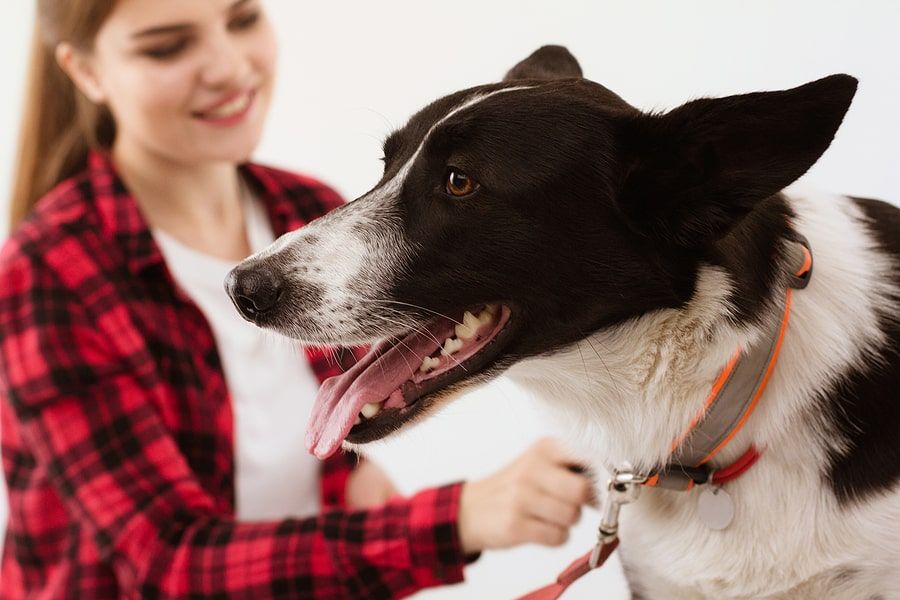High blood pressure, also known as hypertension, affects humans as well as dogs. If left untreated, it can lead to serious health problems. Early detection and proper management are crucial. In this comprehensive guide, we’ll explore the signs and symptoms of high blood pressure in dogs and provide valuable insights on how to help your furry friend.
Understanding Canine Hypertension
Hypertension in dogs occurs when their blood pressure is consistently higher than normal. Just like in humans, high blood pressure in dogs can be a silent killer, causing damage to various organs over time. It can affect the kidneys, heart, eyes, and nervous system, leading to severe complications. Understanding the condition helps in early detection and effective management.
Common Causes of Hypertension in Dogs
Several factors can contribute to high blood pressure in dogs. It’s often secondary to another underlying condition. Here are some common causes:
- Kidney Disease: Chronic kidney disease is a leading cause of hypertension in dogs. Damaged kidneys cannot regulate blood pressure effectively, leading to increased levels.
- Cushing’s Disease: This condition, caused by an overproduction of cortisol, can result in high blood pressure.
- Diabetes: Dogs with diabetes are at a higher risk of developing hypertension.
- Obesity: Excess weight puts additional strain on the heart and blood vessels, leading to increased blood pressure.
- Poor Diet: Diets high in sodium can contribute to high blood pressure.
Understanding these causes can help in preventing and managing hypertension in dogs.
- Recognizing the Signs and Symptoms
Detecting hypertension in dogs can be challenging as the symptoms are often subtle and develop gradually. However, being aware of the signs can lead to early diagnosis and treatment.
- Behavioral Changes
Dogs with high blood pressure may exhibit changes in behavior. They might become more irritable or less active than usual. These changes can be easy to overlook, so it’s essential to monitor your dog’s behavior closely. Sudden aggression or unusual lethargy can be warning signs.
- Vision Problems
High blood pressure can affect your dog’s eyesight. You might notice your dog bumping into objects or having difficulty seeing. This can result from retinal damage caused by hypertension. Symptoms like squinting, dilated pupils, or visible blood vessels in the eyes should not be ignored.
- Nosebleeds and Bleeding
Frequent nosebleeds or unexplained bleeding can be a symptom of high blood pressure. These occur due to increased pressure in the blood vessels. While nosebleeds can have many causes, recurrent episodes warrant a visit to the vet.
- Seizures and Disorientation
Severe hypertension can cause seizures and disorientation. If your dog suddenly starts having seizures, it’s critical to seek veterinary help immediately. Disorientation, confusion, or stumbling are also signs that should prompt immediate medical attention.
- Heart and Kidney Issues
High blood pressure can strain the heart and kidneys. Symptoms include difficulty breathing, increased thirst, and urination. Monitoring these signs can help in early diagnosis. If your dog shows signs of heart disease, such as coughing, difficulty breathing, or a swollen abdomen, it’s important to consult a vet.
- Diagnosing Hypertension in Dogs
If you notice any of the signs mentioned above, it’s essential to consult your veterinarian. Diagnosing hypertension involves measuring your dog’s blood pressure. This is done using a cuff placed around the leg or tail, similar to how blood pressure is measured in humans. Regular check-ups are crucial for early detection, especially for dogs at risk due to age or underlying health conditions.
- Veterinary Examination
During a veterinary visit, the vet will perform a thorough examination. They might use a Doppler flow device or an oscillometric device to measure blood pressure. It’s important to ensure your dog is calm during the procedure, as stress can temporarily raise blood pressure.
- Additional Tests
If hypertension is suspected, additional tests might be necessary. Blood tests, urinalysis, and imaging studies like ultrasound or X-rays can help identify underlying conditions contributing to high blood pressure. Identifying the root cause is essential for effective treatment.
- Treatment and Management
Managing hypertension in dogs involves addressing the underlying cause. Treatment plans can vary based on the specific health condition causing high blood pressure. Here are some common approaches:
- Medications
Veterinarians often prescribe medications to manage blood pressure. These drugs help lower blood pressure and reduce the risk of complications. Common medications include ACE inhibitors, calcium channel blockers, and beta-blockers. It’s important to follow the vet’s instructions and monitor your dog for any side effects.
- Diet and Exercise
A balanced diet and regular exercise can significantly impact your dog’s health. Proper nutrition like adding premium fiber for dogs helps manage weight and reduces the risk of hypertension. Diets low in sodium and rich in nutrients can help manage blood pressure. Regular exercise helps maintain a healthy weight and overall well-being. Tailor the exercise routine to your dog’s age, breed, and health condition.
- Monitoring and Regular Check-ups
Regular veterinary visits are crucial. Monitoring your dog’s blood pressure ensures that treatment is effective. Early detection of any changes can prevent severe health issues. Keep a record of your dog’s blood pressure readings and any symptoms to share with your vet.
- Home Care and Lifestyle Adjustments
In addition to veterinary care, there are steps you can take at home to help manage your dog’s blood pressure.
- Stress Reduction
Reducing stress is essential. A calm and stable environment can help manage hypertension. Avoid sudden changes in routine and create a peaceful space for your dog. Activities like gentle play, massage, and spending quality time together can reduce stress.
- Proper Hydration
Ensure your dog stays hydrated. Adequate water intake supports kidney function and overall health. Provide fresh water regularly and encourage your dog to drink. Hydration is crucial, especially for dogs with kidney issues.
- Healthy Weight Management
Maintaining a healthy weight is vital. Overweight dogs are more prone to hypertension. Feed your dog a balanced diet and avoid overfeeding. Regular exercise helps keep weight in check. Monitor your dog’s weight and consult your vet for dietary recommendations.
- Regular Exercise
Exercise is crucial for overall health. Daily walks and playtime help maintain a healthy weight and reduce stress. However, avoid overexertion, especially in older dogs. Tailor the exercise routine to your dog’s needs and capabilities.
- Cost Considerations
Managing a dog’s health can be costly. Veterinary visits, medications, and special diets add up. Considering the fenceless dog fence cost might be a factor if you’re managing expenses. However, prioritizing health through proper care can prevent more significant expenses in the long run. Investing in your dog’s health can lead to a happier, longer life.
- Preventing Hypertension in Dogs
Prevention is always better than cure. While some risk factors for hypertension in dogs cannot be controlled, such as age and genetic predisposition, there are steps you can take to minimize the risk.
- Regular Health Check-ups
Regular veterinary check-ups are essential for early detection of health issues. Routine blood pressure measurements can help catch hypertension early. Schedule annual check-ups and follow your vet’s recommendations.
- Balanced Diet
Feeding your dog a balanced diet helps maintain optimal health. Consult your vet for dietary advice tailored to your dog’s needs. Avoid high-sodium foods and provide a diet rich in nutrients. A balanced diet supports overall well-being and prevents obesity.
- Exercise and Activity
Keeping your dog active is crucial. Regular exercise helps maintain a healthy weight and reduces stress. Tailor the activity level to your dog’s age and health condition. Engage in activities your dog enjoys to keep them motivated and happy.
- Weight Management
Monitor your dog’s weight and adjust their diet and exercise routine as needed. Obesity increases the risk of hypertension. Consult your vet for guidance on maintaining a healthy weight. Weight management is a key factor in preventing hypertension and related health issues.
Understanding the Risks and Complications
If left untreated, high blood pressure in dogs can lead to severe complications. Understanding these risks emphasizes the importance of early detection and management.
- Kidney Damage
Hypertension can cause significant damage to the kidneys. This can lead to chronic kidney disease, which further complicates the management of high blood pressure. Regular monitoring of kidney function is essential for dogs with hypertension.
- Heart Disease
High blood pressure puts extra strain on the heart. Over time, this can lead to heart disease or heart failure. Symptoms like coughing, difficulty breathing, and fatigue should prompt immediate veterinary attention. Managing hypertension helps protect the heart and reduce the risk of heart disease.
- Eye Problems
Hypertension can cause damage to the blood vessels in the eyes, leading to vision problems or even blindness. Regular eye exams are important for dogs with high blood pressure. Early detection of eye problems can prevent severe complications.
- Neurological Issues
Severe hypertension can affect the brain, leading to neurological issues such as seizures and disorientation. Monitoring your dog’s behaviour and seeking prompt veterinary care can help manage these risks. Neurological issues require immediate attention to prevent long-term damage.
Long-term Management and Care
Managing hypertension in dogs is a long-term commitment. It requires ongoing monitoring and adjustments to treatment plans. Here are some tips for long-term care:
- Consistent Medication
If your dog is prescribed medication, ensure they take it consistently. Follow your vet’s instructions and never adjust the dosage without consulting them. Consistent medication helps maintain stable blood pressure levels.
- Regular Veterinary Visits
Schedule regular check-ups with your vet to monitor your dog’s condition. Blood pressure measurements and routine tests help track progress and make necessary adjustments. Regular visits ensure timely detection of any changes.
- Monitor Symptoms
Keep a close eye on your dog’s behavior and health. Note any changes and report them to your vet. Early detection of symptoms allows for prompt intervention. Monitoring symptoms helps manage hypertension effectively.
- Healthy Lifestyle
Maintain a healthy lifestyle for your dog. Provide a balanced diet, regular exercise, and a stress-free environment. These factors contribute to overall well-being and help manage hypertension. A healthy lifestyle supports long-term health and reduces the risk of complications.
- Educate Yourself
Stay informed about hypertension and its effects on dogs. Understanding the condition helps you provide better care. Consult your vet and read reliable sources to stay updated. Education empowers you to make informed decisions about your dog’s health.
Conclusion
Hypertension in dogs is a serious condition that requires attention and care. Recognizing the signs and symptoms early can prevent severe health issues. Regular veterinary check-ups, a balanced diet, exercise, and a stress-free environment are crucial in managing your dog’s blood pressure.
Always consult your veterinarian for the best care plan tailored to your dog’s needs. By staying vigilant and proactive, you can ensure a healthy and happy life for your furry friend.Understanding the signs and symptoms of high blood pressure in dogs and knowing how to manage it can make a significant difference in your pet’s quality of life. Early detection and proper care are key to preventing severe complications. Always seek professional veterinary advice if you suspect your dog may be suffering from hypertension. With the right approach, you can help your dog lead a healthier, longer life.



